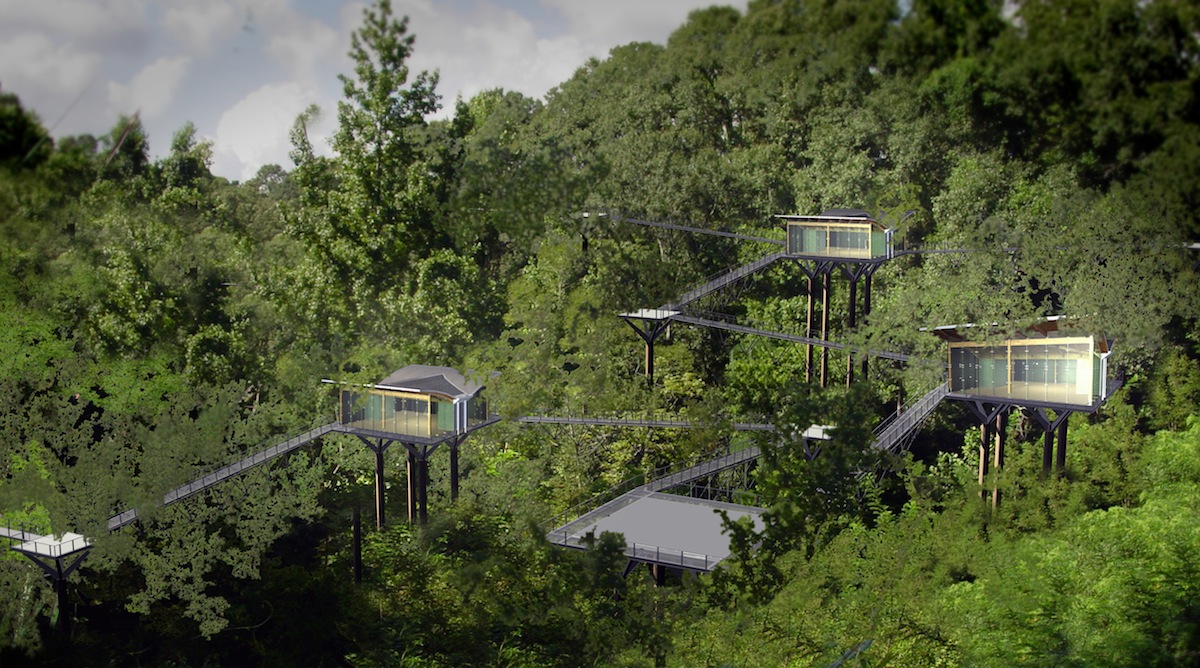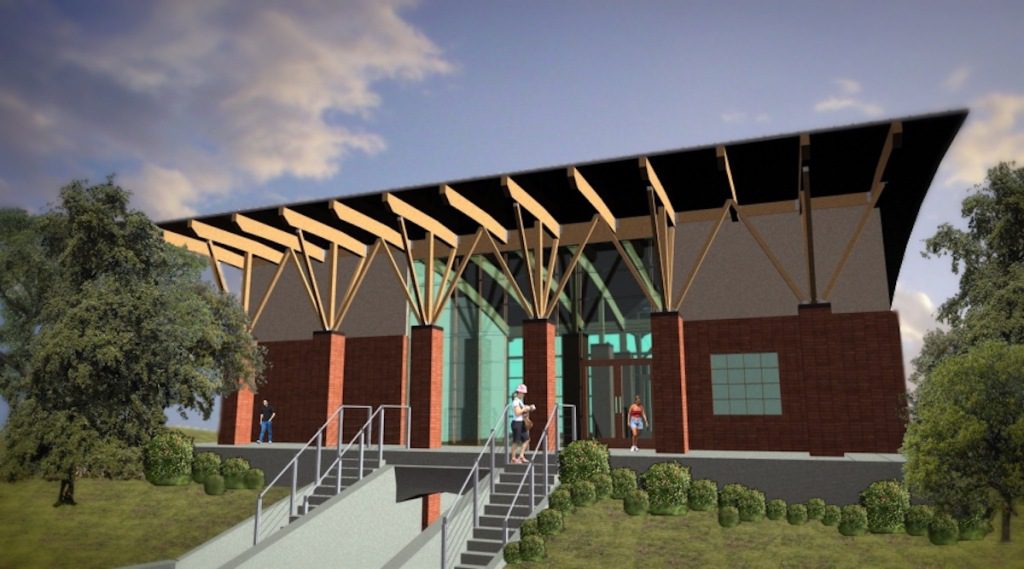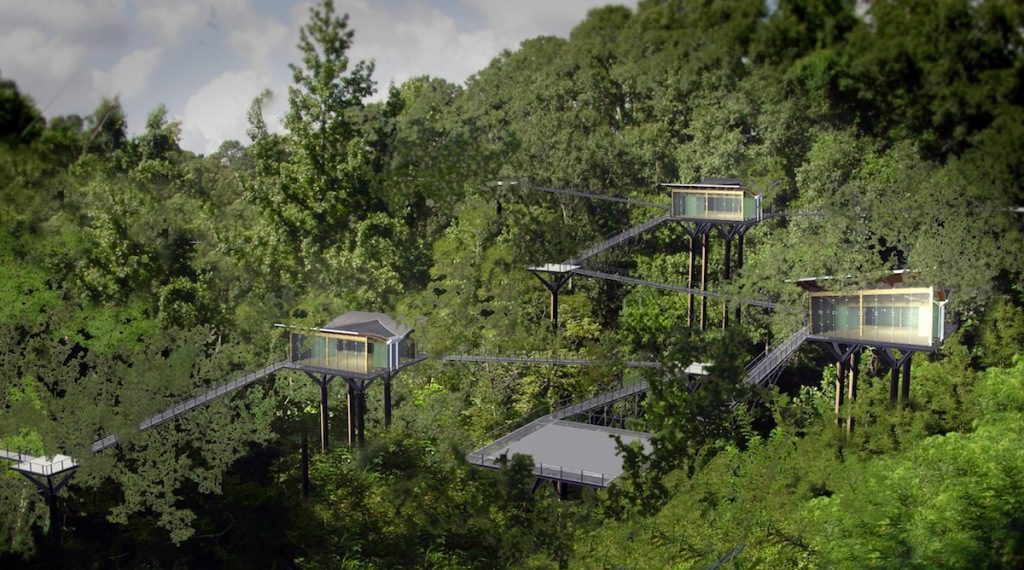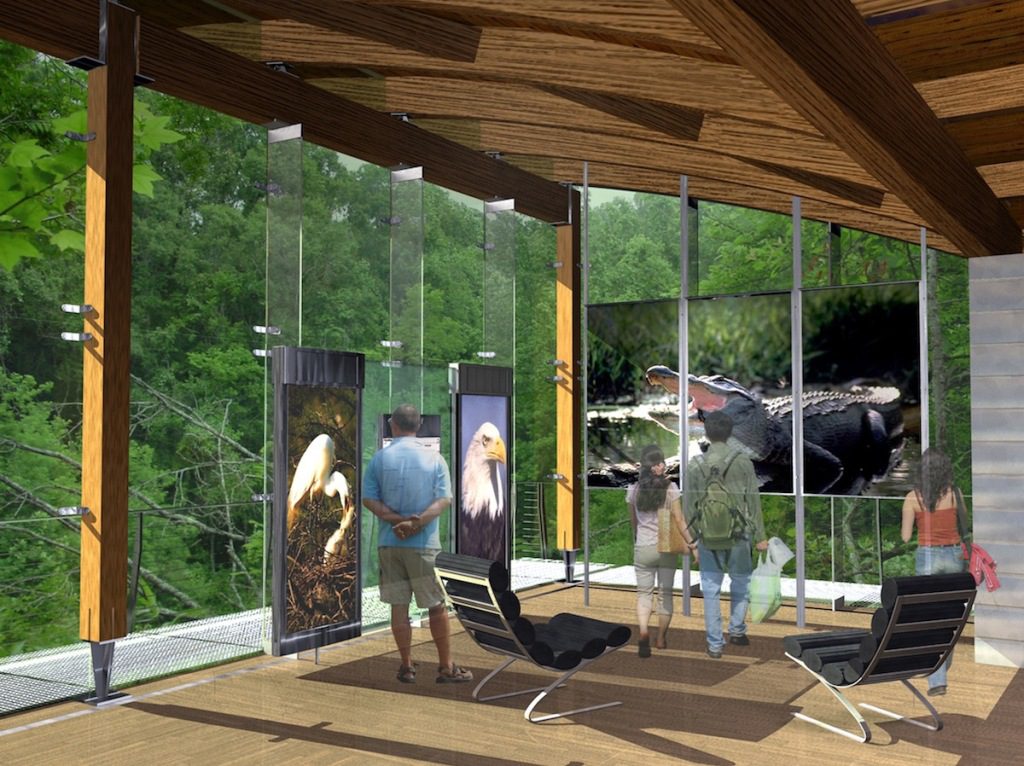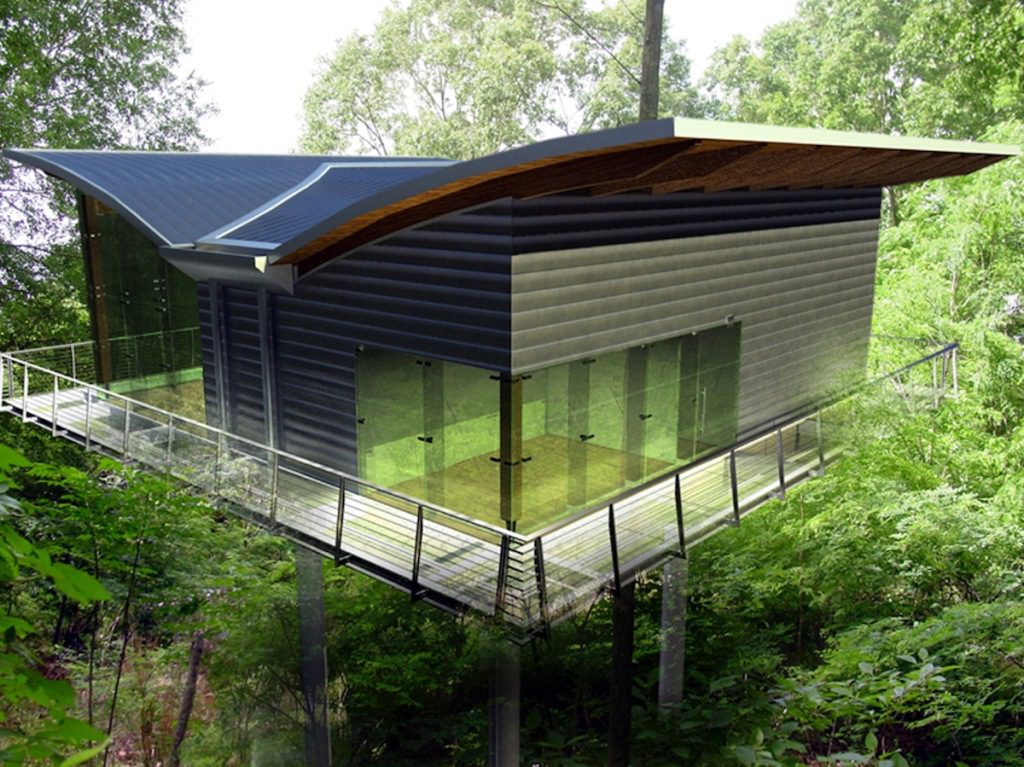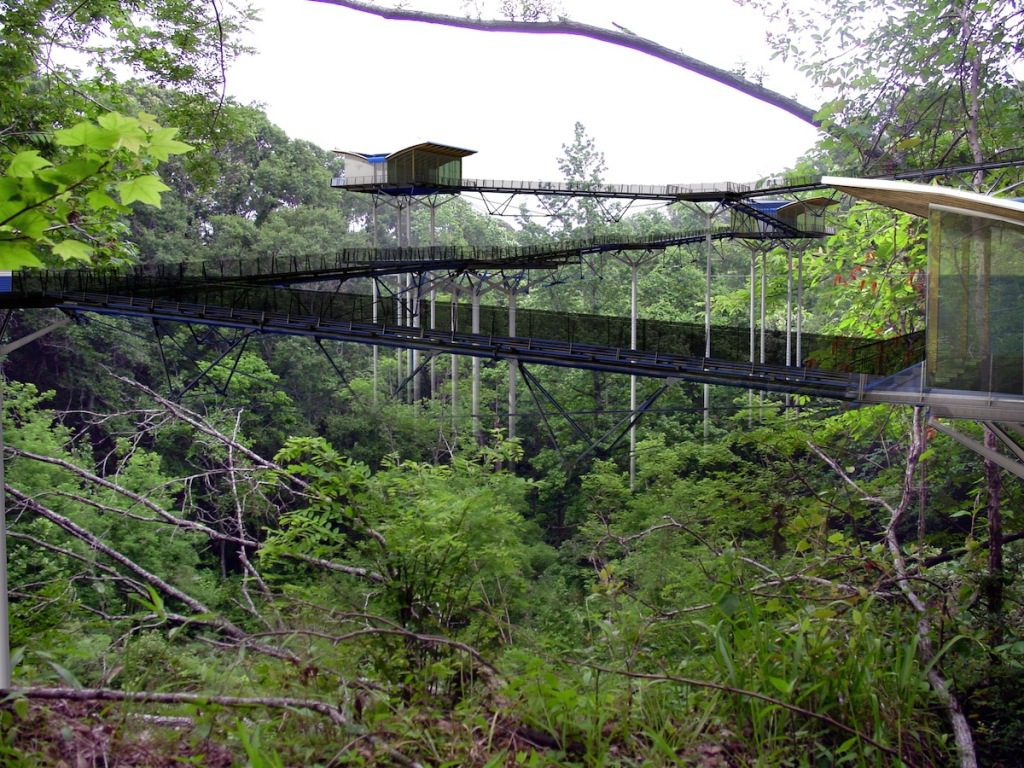Transforming Tunica Hills
Construction is set to begin this year on a project designed to enhance and preserve this West Feliciana Parish wonderland
Tunica Hills, with its heavy woods, deep ravines, bluffs, dirt trails and a variety of wildlife, is a gem. This state preservation area, only about 50 miles north of Baton Rouge, is a haven for hikers and nature enthusiasts. Now it will become more accessible to visitors. The 500 acres of uncharted terrain are the target of a $10 million project Tom Holden, CEO of Holden Architects, says could bring Louisiana national attention.
“This will be a signature project for the state,” says Holden. “It will be unlike any other place in the country.”
The unique design—placing the facilities on pillars in the canopy of the trees, 80 feet off the ground—is what will really make the project spectacular. Holden says the effect will be “very dramatic.” Facilities are to include exhibits, bluff overlooks, a manager’s residence, an interpretive center, hiking trails, parking, and more, all of which will be handicap accessible.
Many families and individuals already enjoy the Tunica Hills Wildlife Management Area, operated and maintained by the Louisiana Department of Wildlife and Fisheries. But the state preservation area, managed by the Louisiana Office of State Parks, is receiving the upgrades. Once work is completed, Baton Rougeans will be tempted even more to make the hour-long drive to enjoy all the activities the area offers: camping, hiking, bird watching, picnicking, biking, and more.
“This will be a chance for Louisianans to experience nature unlike anywhere else in the state,” says Stuart Johnson, assistant secretarty for the Louisiana Office of State Parks. “The views are terrific. It’s breathtaking.”
On a clear day, visibility can be 10 miles atop the bluff overlook of the Mississippi River.
Arriving from Old River Road, visitors will first head to an entrance station, after which they’ll come upon a bluff over Pollock Bayou. They’ll then take a tram to the interpretive center, which, according to the master plan, will be situated on a series of four elevated structures connected by suspended pedestrian footbridges. Visitors can access the property how they wish, either from above or on the ground.
Johnson says the design is not only unique but also purposeful. The construction of the facilities will limit the physical impact on the sensitive environment yet still allow for personal experiences of the diverse ecosystem.
The first phase of construction, estimated to take 14 months, could begin at the end of 2014. The interpretive center, to be completed in the second phase, will include a welcome video as well as educational, interactive displays of foliage, wildlife and archaeology of the site.
In March, Gov. Bobby Jindal approved funding of $2.56 million for the Tunica Hills state preservation area acquisition, planning and construction project from the state capital outlay budget.
Mark Drennen, commissioner of administration under former Gov. Mike Foster, says completion of the project will turn a dream into reality for many people. He says the project has been on the table for more than a decade.
“People who have been to the site believe it’s the most beautiful land in the whole state,” he says. “[Completing construction] will be a thrill for everybody.”
Holden says before Hurricane Katrina hit in August 2005, the design plan was 95% complete and ready to go out for competitive bidding.
“It’s a fabulous project but had to be put on a shelf for more necessary construction in New Orleans,” he says. “We’ve never let it die and have continued to pursue it.”




